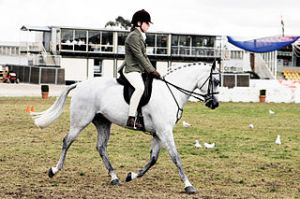
“No, this is my chair, I always sit here!”
“C’mon, it’s just a chair, we have plenty of chairs, one of you take this one.”
“It’s not fair!”
Watching children, there are many times when emotions run high and seem to trample reason underfoot. As a parent the idea of growing up keeps looking more and more attractive. It is a long process. We can’t just switch off our emotions, nor do we have to.
As a counsellor there is a whole lot of stuff to learn about speaking to people in a way to avoid upsetting them. There’s lots of patience involved, listening, feeling out where the person is coming from and avoiding confronting questions like “why?”
Many people say they like plain-speaking, that feelings are not so important, but emotions do play a big part of our lives. They can make life much easier in places, but in others it can be a struggle.
Conrad Baars was a psychologist who uncovered some details of St Thomas Aquinas’ insights into the interplay of emotion and reason. Here is my favourite illustration from his books by way of explaining this.
Any person can develop a good image of the integrating process between emotion and reason and will, by drawing an analogy between the interaction of horse and rider, and that of the emotions and the higher faculties. The horse represents the emotional life, the rider the life of reason and will.
The girl can hardly wait for the little colt to grow up so she can ride it. But she must wait for three years or more before the colt is strong enough. In the meantime she spends many hours with the horse, watching it play and run around, discovering itself and the world. She feeds it regularly, brushes its coat and patiently leads it by a rope around its neck. Thus they get to know each other, their likes and dislikes, temperaments, and other characteristics. They learn to respect and trust each other.
When at last the time comes to train the young horse the girl must learn this rather arduous and involved process from an experienced trainer. She is fortunate to find the best one in the business. She soon discovers it takes time and patience to teach the horse to go through its paces, to know what commands to give, how to bridle and saddle it, and many more things. The horse in the beginning tries to have its own way, refuses to obey, resists doing things that do not come naturally, yet responds little by little to the girl’s gentle, yet firm insistence to make him do what she wants. Whenever the girl loses her temper and hits the horse, things get worse and the horse shows signs of obstinacy. The next day the girl finds it harder to catch the horse in the meadow. She has to be especially kind to regain the trust and cooperation of the horse. Both girl and horse, however, learn from their mistakes, and in time what was a struggle, and perhaps looked at times like a battle between girl and horse, becomes more and more a cooperative effort. After several years when the girl has grown into a young woman, and the colt has become fully grown and strong, everything goes smoothly because they respect and listen to each other. The young woman has learned to mount the horse as soon as she has fallen off. The horse no longer shies and rears as often as it did at first, while the young woman has learned to remain in the saddle when it does.
It has become a joy for the woman to go riding because the horse does all the heavy work, walking or galloping long distances, while she leads it where she wants to go with barely visible, but readily felt movements of her legs and hands. At last the woman and horse have become one, they understand and trust each other; together they do what neither could do alone. Through trial and error, learning from mistakes and successes, final integration has been achieved. With continued good care of the horse by the woman the daily ride is pure joy. She is free to let her thoughts and memories go out to whatever she wants. All her energies have become available for more important things in the deep satisfaction that she has become an expert horsewoman and free to go where she pleases because her horse serves her well.
Compare this picture of healthy growth and integration with that of a man who has always been afraid of horses, but who had to learn to ride one as his transportation depended on it. He had never fed the horse well in the belief that a weak horse would be easier to control…
From towards the end of chapter four, How our psyhological motors run, Feeling and healing your emotions by Conrad Baars.
Mustard Seed Bookshop is having their annual sale starting Thursday 15th August 2013.
